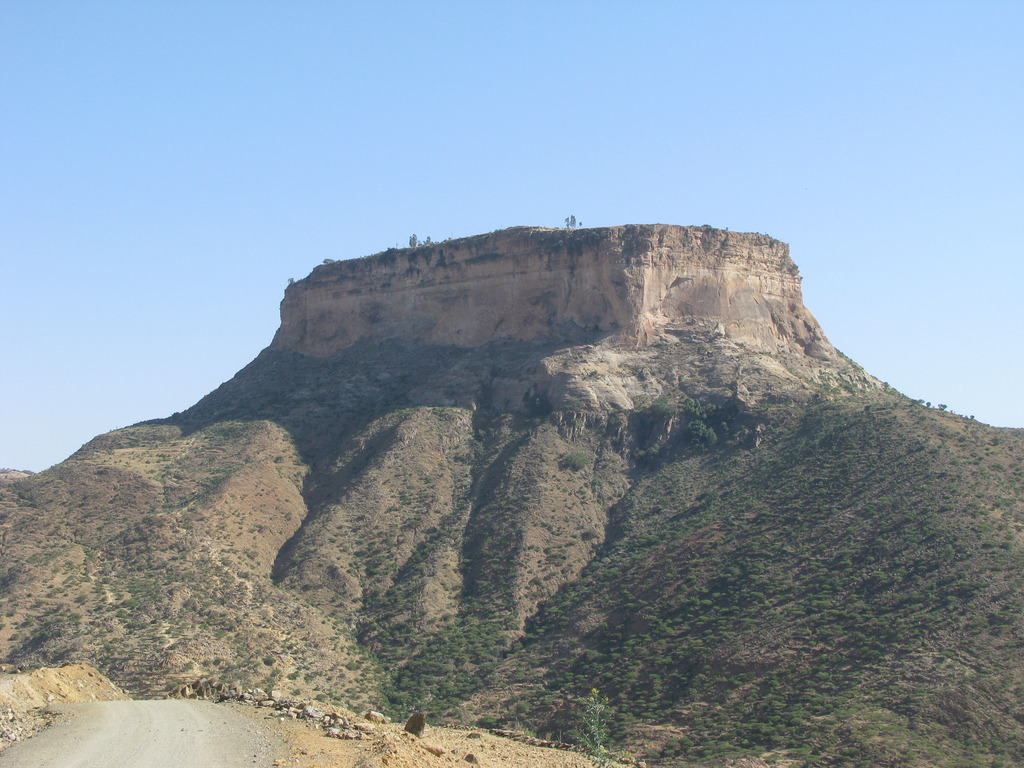Written By Tom Hart, Geographical
Ethiopia’s remote churches range from rock-hewn buildings perched on mountains to timber-built caves. These almost forgotten churches contain rich murals and vibrant manuscripts.
‘The churches were looked at by American scholars many years ago, but they only measured them. There was no interest in the paintings,’ says Maria-José Friedlander.
Friedlander set out to document Ethiopia’s most remote churches with her husband, Bob Friedlander. The result Hidden Treasures of Ethiopia has already been published in Ethiopia, and is now available in Europe.

Inside Abraha Atsbeha church (Image: Maria-Jose & Bob Friedlander/IB Tauris)
Churches were not the first thing Friedlander noticed when she first visited Ethiopia in the 1980s with an art history study group. ‘I was horrified by the fate of children with trachoma [a bacterial eye infection]. I tried to send medicine from England, but I found that I couldn’t send it directly,’ she says.
The Daughters of Charity, an Ethiopian order of nuns, were treating children for trachoma. Facilities were often sparse. ‘There wouldn’t be more than three or four nuns, and a doctor would come every month to do major operations. There was one nun who could do minor operations,’ says Friedlander.
‘We brought £2,000 and medicine for the Daughter of Charity. We had never met. We emptied the medicines onto a table and handed over a cheque,’ she says.

Manuscript. The story of St Michael and Dorotheus (Image: Maria-Jose & Bob Friedlander/IB Tauris)
Then the war with breakaway province Eritrea started. ‘During the war there was only electricity for one or two hours in the evening,’ says Friedlander. ‘The streets were empty.’ Toilet paper was not available, and people used to stones instead. ‘There weren’t even enough newspapers to use,’ she adds.

St Yared, Abuna Gabre Mikael (Koraro) (Image: Maria-Jose & Bob Friedlander/IB Tauris)
‘You wouldn’t recognise the country now,’ says Friedlander. ‘In 1998 there were hardly any cars, now the traffic is horrendous. The cities have changed, but the smaller towns are the same.’
Local fashion has become more western. ‘Women used to regularly dress in the traditional, very elaborate embroidered costumes, but now these are only seen on Sunday and at weddings,’ says Friedlander. Cheap western-style skirts come in from neighbouring Djibouti, each costing about £1.
There’s still scarcity in the country. ‘Ethiopian churchmen often do not have bibles. The book is available, but it’s expensive so they don’t have it,’ says Friedlander.
Each region has its own church with remarkable decorations. Often these are not known nationally, according to Friedlander. ‘The churches are easy to visit,’ she says. ‘Usually the priest is given land to work by the church, and they can be found working their own field.’ Find the priest and the church will be opened up.

Debre Tsion with the rock-hewn church of Kidana Mehrat at its summit (Image: Maria-Jose & Bob Friedlander/IB Tauris)
In some places, the local government has agreed a price for visiting the churches, but many are remote and unknown enough for entry to be free. A willingness to hike is the only price for admission. ‘Some of the churches are 300 or 400 metres high. So you go up and down, up and down to get there,’ says Friedlander.

